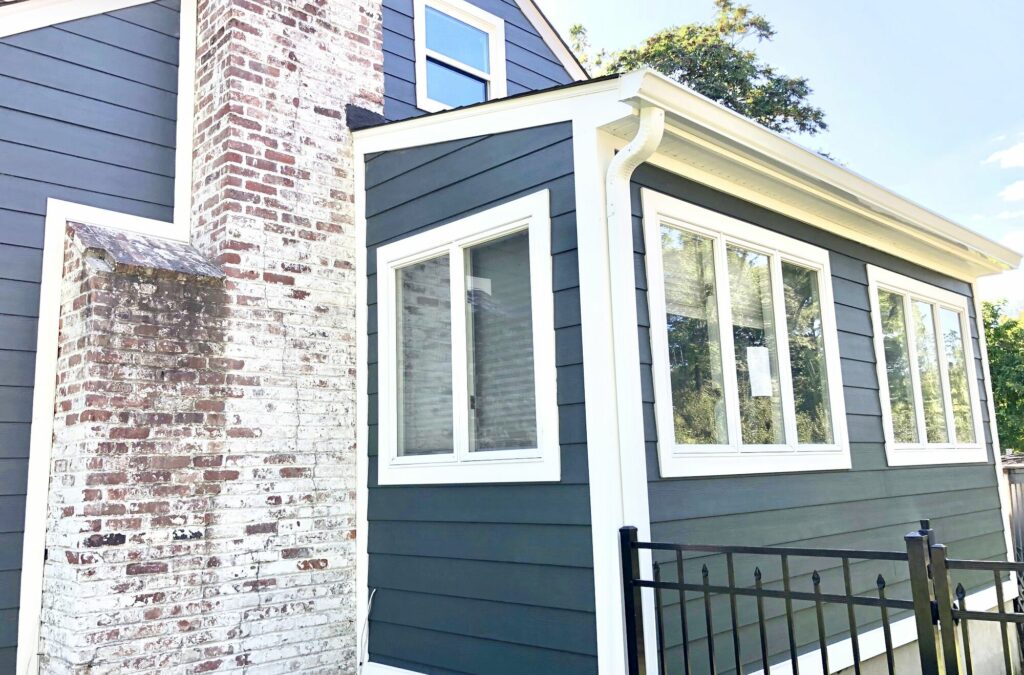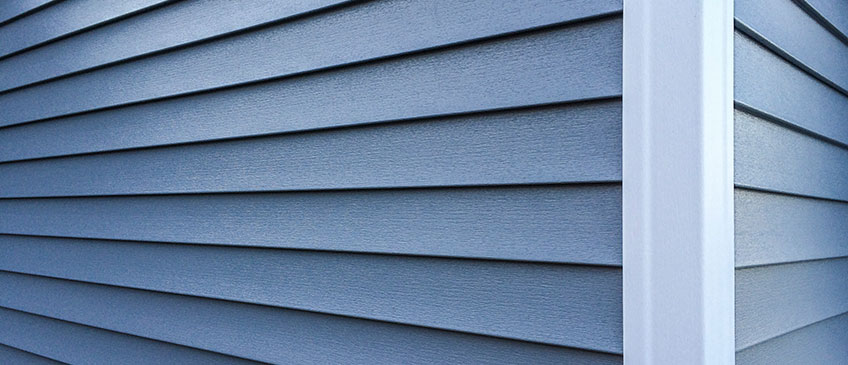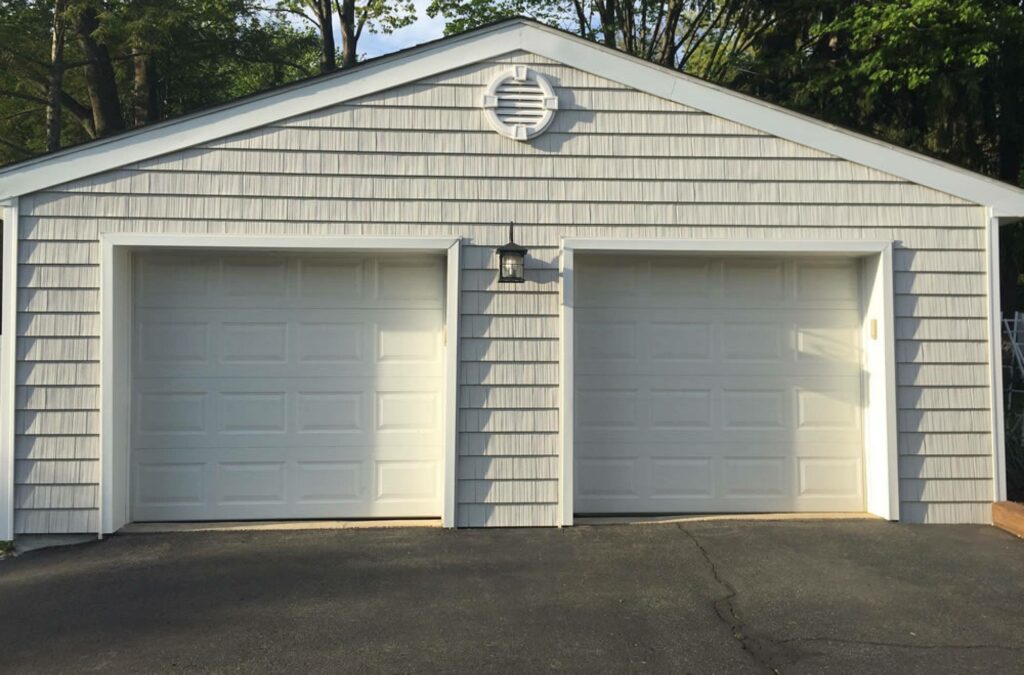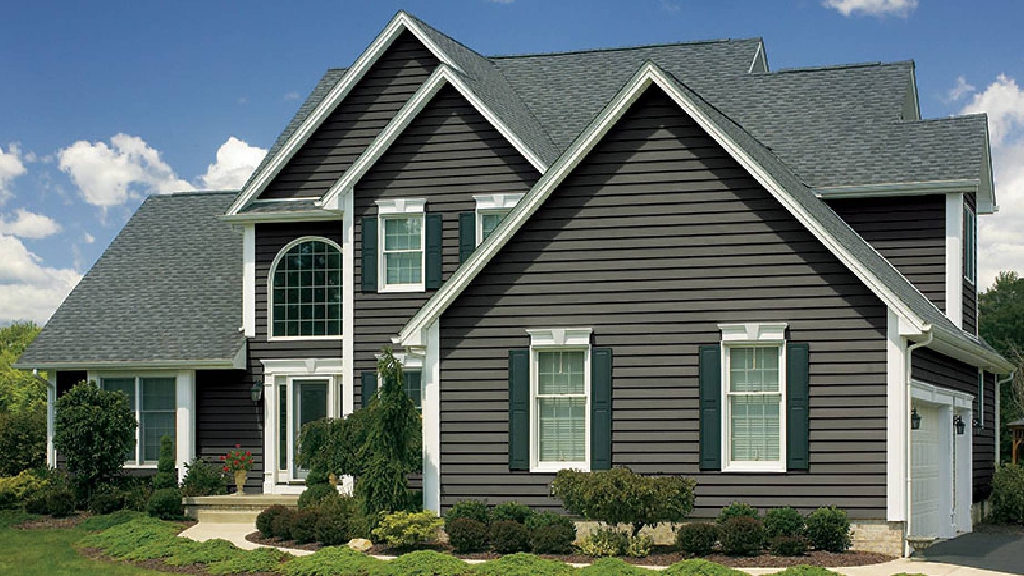There is no question that no other building materials play such a key role in your home. Not only is it a factor in the overall appearance in your home, it protects it against the harshest elements and for those reasons adds architectural character and value.
Usually, a vinyl siding replacement recoups more than 80 percent of its initial cost at resale and fiber cement siding returns about 84 percent.
GUIDE TO COMMON SIDING REPLACEMENT OPTIONS
Vinyl Siding
Tough, durable, and widely available in many styles and colors. Color permeates the material and won’t reveal nicks and scratches. Today’s standards ensure that vinyl siding will maintain its shape in extreme temperatures, provide resistance to high winds, and retain its color.
Benefits: Light weight makes for speedy installation; can be retrofit over existing siding; little maintenance; top-quality brands offer transferable lifetime guarantees to subsequent buyers.
Drawbacks: Seams will show where the ends of standard 12-foot panels overlap. Extra-long panels virtually eliminate seams for an additional cost of about 30%.
Green factor: Vinyl has a long replacement cycle of 30 to 50 years, but the same ingredient that makes it durable—polyvinyl chloride or PVC—doesn’t degrade in landfills. Byproducts of PVC production may include dioxin and other toxins.
Metal Siding
The popularity—and availability—of steel and aluminum siding is waning because vinyl has evolved as the better low-cost option. Metal siding comes in many pre-finished colors and features styles that mimic wood. Modern metal sidings are dent-resistant, insect- and fire-proof, and require little maintenance. With proper care, steel and aluminum siding will last more than 50 years.
Benefits: Light weight speeds installation; baked-on paint enamel finishes won’t need periodic repainting.
Drawbacks: Not readily available in all areas; dents are permanent; scratches should be touched up with a quality, color-matched house paint.
Green factor: Aluminum siding products may contain up to 30% recycled content.
Fiber-cement Siding
Composite Siding
Wood Siding
Wood siding comes in many species and grades, and what you select—and pay—depends on how you plan to finish the material. If you want the natural beauty of wood to show through a clear or semi-transparent stain, you’ll need to opt for more expensive grades with fewer knots and other defects.
Benefits: Easy-to-shape-and-cut material requires few specialized skills for installation, reducing labor costs; with proper care, wood will last 100 years or more—longer than synthetic materials; superior aesthetics.
Drawbacks: Can be expensive; requires repainting every 5 years, re-staining every 3 years, or applying a clear finish every 2 years, for which a professional painter will charge thousands; retrofitting with wood means a complete tear-off of existing materials; non-moisture-resistant species, such as pine and fir, are susceptible to rot.
Sidings vary in so many ways. Thus understanding how things work is essential to know which will best suit your purpose.
To schedule an estimate with Magnolia Home Remodeling Group
please click on the free estimate button or call 855-624-6655.
Estimates are always free and we greatly appreciate the opportunity!




